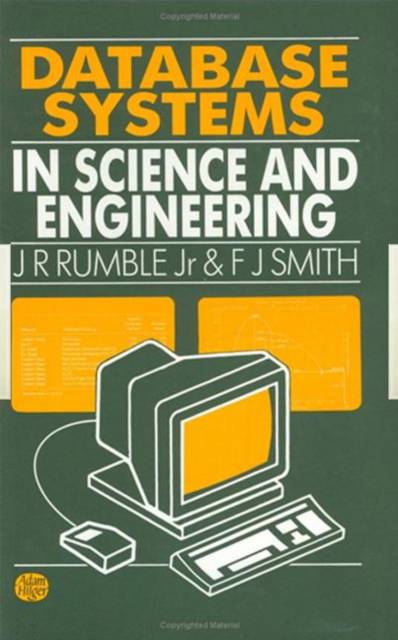
- Afhalen na 1 uur in een winkel met voorraad
- Gratis thuislevering in België vanaf € 30
- Ruim aanbod met 7 miljoen producten
- Afhalen na 1 uur in een winkel met voorraad
- Gratis thuislevering in België vanaf € 30
- Ruim aanbod met 7 miljoen producten
Zoeken
€ 182,45
+ 364 punten
Omschrijving
Computerized databases provide a powerful everyday tool for data handling by scientists and engineers. However, the unique nature of many technical tasks requires a specialized approach to make use of the many powerful commercial database tools now available. Using these tools has proved difficult because database technology is often shrouded in layers of jargon. An essential guide for scientists and engineers who use computers to avoid drowning in a flood of data, Database Systems in Science and Engineering dispels the myths associated with database design and breaks the barriers to successful databases. Using the language of scientists and engineers, this book explains concepts and problems, offers practical steps and solutions, and provides new ideas for better data handling. The first part of the book presents an overview of technical databases using examples taken from real applications and the current state of technical databases. The second part covers the computer implementation of technical databases, including examples and the necessary computer science theory to form a sound background. The authors confront the many difficulties that arise in the design and implementation of a realistic database and offer solutions to these challenges. Before beginning any database project, scientists and engineers should read this book to understand how to make every database project successful through careful planning, good design, and efficient use of database tools.
Specificaties
Betrokkenen
- Auteur(s):
- Uitgeverij:
Inhoud
- Aantal bladzijden:
- 302
- Taal:
- Engels
Eigenschappen
- Productcode (EAN):
- 9780750300483
- Verschijningsdatum:
- 1/01/1990
- Uitvoering:
- Hardcover
- Formaat:
- Genaaid
- Afmetingen:
- 164 mm x 241 mm
- Gewicht:
- 607 g

Alleen bij Standaard Boekhandel
+ 364 punten op je klantenkaart van Standaard Boekhandel
Beoordelingen
We publiceren alleen reviews die voldoen aan de voorwaarden voor reviews. Bekijk onze voorwaarden voor reviews.











